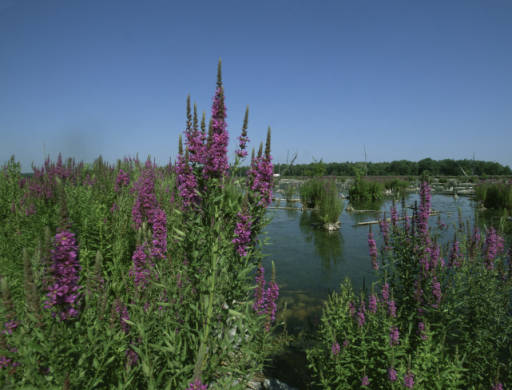A beautiful purple plant has some very ugly effects on many wetland ecosystems—listen up:

Pretty or not, these wildflowers have a highly unappealing effect on wetland ecosystems. (via U.S. FWS)
What do you call a purple alien that’s really tough to get rid of? Purple loosestrife…and it’s no joke.
First spotted in the Great Lakes region near Lake Ontario in 1869, this pretty but invasive purple flowering plant takes over wetland ecosystems, displacing native plants and destroying wildlife habitat.
Once established, this unfortunately hardy plant can produce more than two million seeds per year and re-sprout from broken stems.
But people are fighting back against this purple invader. Hand-pulling, digging, herbicides and leaf-eating beetles are all being used to eliminate purple loosestrife.
And, bonus: you can make a difference, too. Anyone who wants to protect wetlands can learn to identify the plant and volunteer to help.
Get schooled:
- Learn more about purple loosestrife from Minnesota’s DNR.
- Look into the USGS citizen science volunteer project to monitor purple loosestrife in your area
The fine print:
- This segment was produced in partnership with Cornell’s Atkinson Center for a Sustainable Future.




